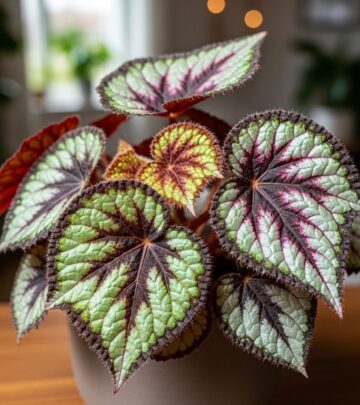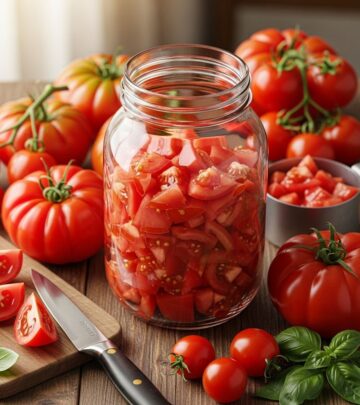Common Flowering Weeds: 39 Identification And Control Tips
Discover and identify 39 common weeds with flowers—complete with descriptions, uses, and management tips.

Image: HearthJunction Design Team
Introduction: The Unexpected Beauty of Flowering Weeds
Flowering weeds brighten up fields, gardens, and lawns everywhere. While some boast delicate blooms and attract pollinators, others can overwhelm garden beds or outcompete desired plants. Recognizing which weeds with flowers to keep and which to control is essential for any gardener aiming for a balanced, thriving outdoor space. This guide introduces you to 39 of the most common flowering weeds, giving you clear identification tips, practical insights, and details on their impact, so you can make informed decisions about your landscape.
What Makes a Weed a Weed?
A weed is defined as any plant growing where it’s not wanted. However, many weeds are simply wildflowers in the wrong spot. Some offer ecological benefits, while others threaten your cultivated plants. Understanding their characteristics, growth habits, and uses helps you better manage your garden ecosystem.
How to Identify Flowering Weeds
Accurately identifying weeds with flowers is crucial. Here’s what to look for:
- Flower Color and Shape: Note the number of petals, color, and arrangement.
- Leaf Structure: Examine leaf shape, edges (smooth, toothed, or lobed), and arrangement on the stem.
- Growth Habit: Observe whether the plant creeps, stands upright, or spreads aggressively.
- Seed and Fruit: Some weeds have distinctive seed heads or fruit that aid identification.
- Location and Conditions: Many weeds thrive in specific soils, moisture levels, and exposures.
Daisy Weeds (Bellis perennis)
Daisy weeds are distinguished by their bright white petals and sunny yellow centers. Despite their charming appearance, they spread quickly, especially in compacted or low-fertility soils where little else thrives. The flowers are about 1–1.5 inches wide, with leaves up to 2.5 inches and fine, harmless spikes. You’ll often find them in cracks, rock gardens, and sunny lawns. Daisies thrive in USDA zones 4–8, forming dense mats that can crowd out other plants.
Dandelions (Taraxacum spp.)
The bright yellow dandelion is a universally recognized weed, often dotting lawns from spring through fall. Dandelions flower from March to September, later turning to fluffy seed heads dispersed by wind. Surprisingly, dandelions are edible—young leaves work well in salads, and their stalks yield a sticky white sap used historically as glue. Thriving in disturbed, sunny ground, dandelions reach up to 28 inches. They tolerate a wide soil pH and grow in USDA zones 2–11.
Clover (Trifolium spp.)
Clover is common in many lawns and gardens, noted for its trifoliate leaves and puffy white, pink, or red flowers. While some view it as a weed, clover is also a soil improver, fixing nitrogen that benefits other plants. Its low, dense mats can crowd out turfgrass but are gentle underfoot. Clover thrives in moist, fertile soils and is hardy across a range of climates.
Oxalis (Wood Sorrel)
Oxalis is often mistaken for clover but is identified by heart-shaped leaves and bright yellow (sometimes pink or white) blooms. Wood sorrel is edible in moderation, but its vigorous growth can overwhelm garden beds if unchecked. Look for clusters in moist, shaded areas.
Henbit (Lamium amplexicaule)
Henbit features soft, scalloped leaves and purple or pink tubular flowers. This weed thrives in late winter to early spring, especially in disturbed soil. Its low-growing habit forms dense mats that can quickly take over bare spots.
Chickweed (Stellaria media)
Chickweed produces delicate white star-shaped flowers. Its sprawling stems and tiny leaves create a lush, low carpet, especially in moist, shady gardens. Chickweed is edible and often used in salads or as a wild herb.
Ground Ivy (Creeping Charlie)
Ground ivy, also called creeping Charlie, is a fast-spreading, shade-tolerant weed with small purple-blue flowers and round, scalloped leaves. Its creeping stems root at the nodes, allowing it to invade lawns and garden beds rapidly.
Common Purslane (Portulaca oleracea)
This succulent annual weed produces tiny yellow flowers and thick, reddish stems. Purslane grows flat to the ground and is highly drought-tolerant. Both stems and leaves are edible and rich in omega-3 fatty acids, making purslane a valuable foraged food.
Speedwell (Veronica spp.)
Speedwell is known for its dainty blue, purple, or white flowers and creeping stems. It often invades lawns and garden borders, creating dense patches that can be hard to eradicate.
Wild Violets (Viola spp.)
Wild violets produce heart-shaped leaves and purple, blue, or white flowers. While their blooms are lovely, violets spread aggressively via underground rhizomes and seeds, making them tough to control once established.
Black Medic (Medicago lupulina)
Black medic resembles clover, with yellow, ball-shaped flower clusters and trifoliate leaves. This annual or short-lived perennial is especially common in compacted soils and low-fertility lawns, where it competes with turfgrass.
Bittercress (Cardamine spp.)
Bittercress is a cool-season weed featuring tiny white flowers with four petals. Its explosive seed pods can scatter hundreds of seeds, enabling rapid spread in disturbed or moist sites.
Common Mallow (Malva neglecta)
Mallow weeds produce pale pink to purple flowers and rounded, crinkled leaves. Their deep taproots make them drought tolerant but difficult to remove completely.
Wild Geranium (Geranium spp.)
Wild geranium or cranesbill weeds show off five-petaled purple-pink flowers and deeply lobed leaves. They prefer woodland edges and shaded garden beds, spreading through both seed and creeping rhizomes.
Bindweed (Convolvulus arvensis)
This notorious weed features white or pink, funnel-shaped flowers and twining, vine-like stems. Bindweed is persistent, with deep roots and a tendency to smother other plants as it climbs.
Morning Glory (Ipomoea spp.)
Morning glory is a fast-growing vine producing trumpet-shaped flowers in white, blue, or purple. While prized as an ornamental, escaped morning glories become weedy, self-seeding prolifically in garden spaces.
Creeping Buttercup (Ranunculus repens)
Creeping buttercup shows glossy yellow flowers above dark green, deeply divided leaves. Its creeping stems root at nodes, allowing it to carpet moist
References
Read full bio of Anjali Sayee












